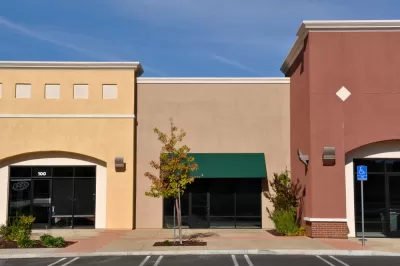Urbanist Jane Jacobs' support for mixed use development has long been seen as the best urban design strategy, but this vision assumed that the retail space under housing could be rented. What if that is no longer the case?

Should ground-floor use go from retail to housing?
In San Francisco, the closing of once-popular San Francisco restaurants and the decline of longtime Union Square pillar Macy’s raise a question: Have the fundamentals of urban retail changed?
If the answer is yes, San Francisco could move to reduce retail requirements in new housing developments while adding badly needed housing, which would represent a dramatic change in “best practices” for urban neighborhoods.
Jane Jacobs’s support for mixed-use development with “eyes on the street” has long been seen as the best urban design strategy, but this vision assumed that the retail under housing could be rented. What if it cannot? Or, what if the only market for these retail spaces are for offices closed on evenings and weekends? Such uses do not offer the ongoing street activity that created Jacobs’s famed street “ballet.”
As San Francisco and other large cities combat their housing shortages, the requirement that ground-floor space under housing be for retail should to be open to debate. We may conclude that the city should not be giving up housing units for retail spaces that are not wanted or needed.
National Trend
An intriguing article out of New York City found that despite the economic upturn, vacancy rates are up in every Manhattan retail corridor. Some argue that unlike past downturns, this one is not cyclical. Brokers believe that “brick-and-mortar retailers will shrink dramatically during the next few years, so supply of retail space will outweigh demand for it.”
I recall that over a decade ago, Berkeley Daily Planet Editor Becky O’Malley questioned whether Berkeley had too much retail in light of people’s shifting purchasing activity to the internet. Urban America’s buying habits have shifted even more dramatically since that time, raising questions as to whether it’s time to rethink the popular model of mixed-use development.
Like nearly everyone else, I prefer the look of mixed-use streets. I bemoan the Tenderloin’s unusual lack of mixed-use housing, despite challenges finding quality tenants for existing spaces. Jacobs was correct: mixed-use streets are more interesting, and have more energy and foot traffic.
So before we give up on mixed use, let’s consider how San Francisco and other cities can maintain successful retail in an online world...
FULL STORY: Should Online Shopping Change How We Use Ground-Level Space?

Alabama: Trump Terminates Settlements for Black Communities Harmed By Raw Sewage
Trump deemed the landmark civil rights agreement “illegal DEI and environmental justice policy.”

Planetizen Federal Action Tracker
A weekly monitor of how Trump’s orders and actions are impacting planners and planning in America.

The 120 Year Old Tiny Home Villages That Sheltered San Francisco’s Earthquake Refugees
More than a century ago, San Francisco mobilized to house thousands of residents displaced by the 1906 earthquake. Could their strategy offer a model for the present?

In Both Crashes and Crime, Public Transportation is Far Safer than Driving
Contrary to popular assumptions, public transportation has far lower crash and crime rates than automobile travel. For safer communities, improve and encourage transit travel.

Report: Zoning Reforms Should Complement Nashville’s Ambitious Transit Plan
Without reform, restrictive zoning codes will limit the impact of the city’s planned transit expansion and could exclude some of the residents who depend on transit the most.

Judge Orders Release of Frozen IRA, IIJA Funding
The decision is a victory for environmental groups who charged that freezing funds for critical infrastructure and disaster response programs caused “real and irreparable harm” to communities.
Urban Design for Planners 1: Software Tools
This six-course series explores essential urban design concepts using open source software and equips planners with the tools they need to participate fully in the urban design process.
Planning for Universal Design
Learn the tools for implementing Universal Design in planning regulations.
Clanton & Associates, Inc.
Jessamine County Fiscal Court
Institute for Housing and Urban Development Studies (IHS)
City of Grandview
Harvard GSD Executive Education
Toledo-Lucas County Plan Commissions
Salt Lake City
NYU Wagner Graduate School of Public Service





























